I have been fixating on milkweed. Two years ago, I found plenty of milkweed on my property. There was purple milkweed, with its pinkish blooms. There was common milkweed, with its less brilliant kind of purple. And there was even butterfly milkweed, which was sort of orange. But all the milkweed disappeared last year. And along with it went the butterflies that I used to watch feeding on the milkweed flowers.
This year there has been massive flooding in our state, and with the rain, there also came a lot of growth. In a completely different spot in my unmown pasture, a bunch of plants have come up that have leaves just like my old milkweed. Well, not exactly like my old milkweed, and they have yet to flower. So I am hoping they are milkweed, but I’m not sure.
Yesterday I trudged in the rain-soaked pasture in high boots to get a closer look. Those look like flowers developing in the middle, at the top if the plant.
Then today a Facebook friend, Dave McClure, a Scotsman who lives in Doha, Qatar, posted a photo of a plant and asked what it was.
“Anybody know what this plant is? The seed pods are about lemon sized and puffy to touch and the leaves are round and waxen. Obviously it likes hot climates or it wouldn’t be wasting its time in Qatar,” Dave McClure wrote on his Facebook wall.
It looks like a plant I saw in Israel, I thought to myself. But then I also thought, no, the leaves remind me of milkweed. So Missouri Aya kept insisting it was milkweed, like the rain soaked plant in the pasture, and Israeli Aya kept thinking it was a plant she had seen in her arid native land long. long ago. I had split brain syndrome. But wait, could it be both?
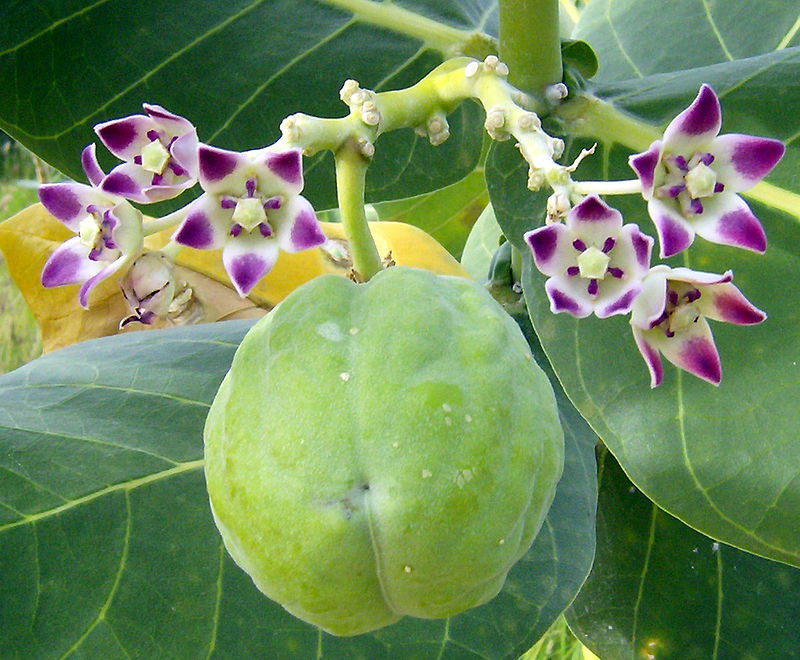
Attribution: Wilfredo Rodriguez
I looked up “milkweed, Qatar” and here is what I found:
http://www.floraofqatar.com/calotropis_procera.htm
“Found only in Doha” the site said. But not really only in Doha. That’s just if you are looking for it exclusively in Qatar. The asclepias procera is native to “North Africa, Tropical Africa, Western Asia, South Asia, and Indochina.”
The plant is a milkweed. It is even called “Giant Milkweed”. But it also goes by a number of other names: “Asclepias procera, mudar, osher, Sodom’s Apple, stabragh, ushaar, ushar”. The name Sodom’s Apple comes from the Hebrew תפוח סדום. And the fact that it even has a Hebrew name is a pretty good indication that, yes, this version of milkweed does grow in Israel as well.
In his Biblical Researches in Palestine, Edward Robinson describes it as the fruit of the Asclepias gigantea vel procera, a tree 10–15 feet high, with a grayish cork-like bark called osher by the Arabs. He says the fruit resembled a large, smooth apple or orange, hanging in clusters of three or four. When pressed or struck, it exploded with a puff, like a bladder or puff-ball, leaving in the hand only the shreds of the thin rind and a few fibers. It is filled chiefly with air, which gives it the round form. In the center a small slender pod runs through it which contains a small quantity of fine silk, which the Arabs collect and twist into matches for their guns. From the Wikipedia
If you look Sodom’s apple up in the Hebrew wikipedia, you will find that the plant has another name: פתילת המדבר הגדולה. Which loosely translated means “great wick of the desert.”
That just goes to show once again that everything is interconnected. All flesh is kin. And when your intuition says it’s a milkweed — no, wait, I’ve seen it in Israel! — the answer should always be: Why not both? It’s a small world.

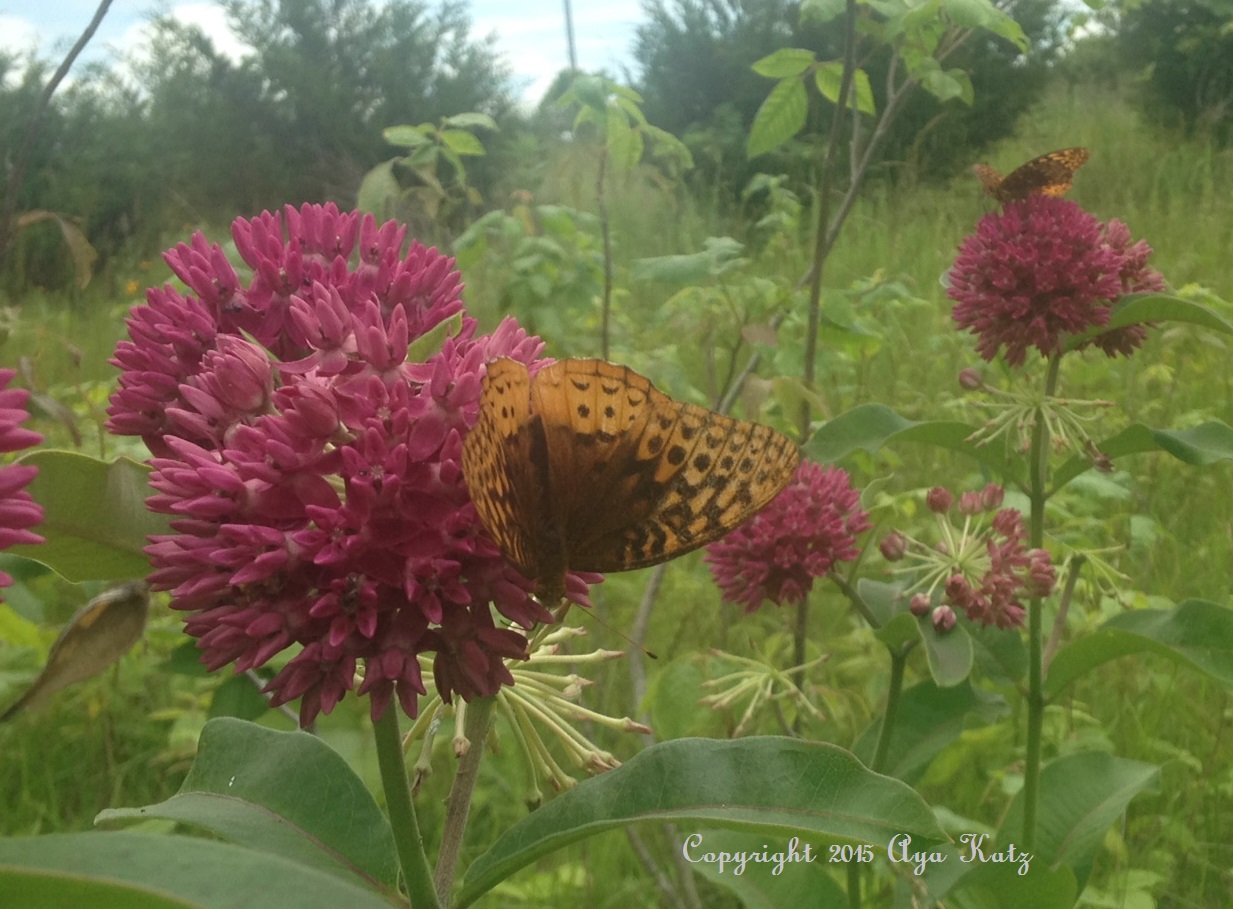
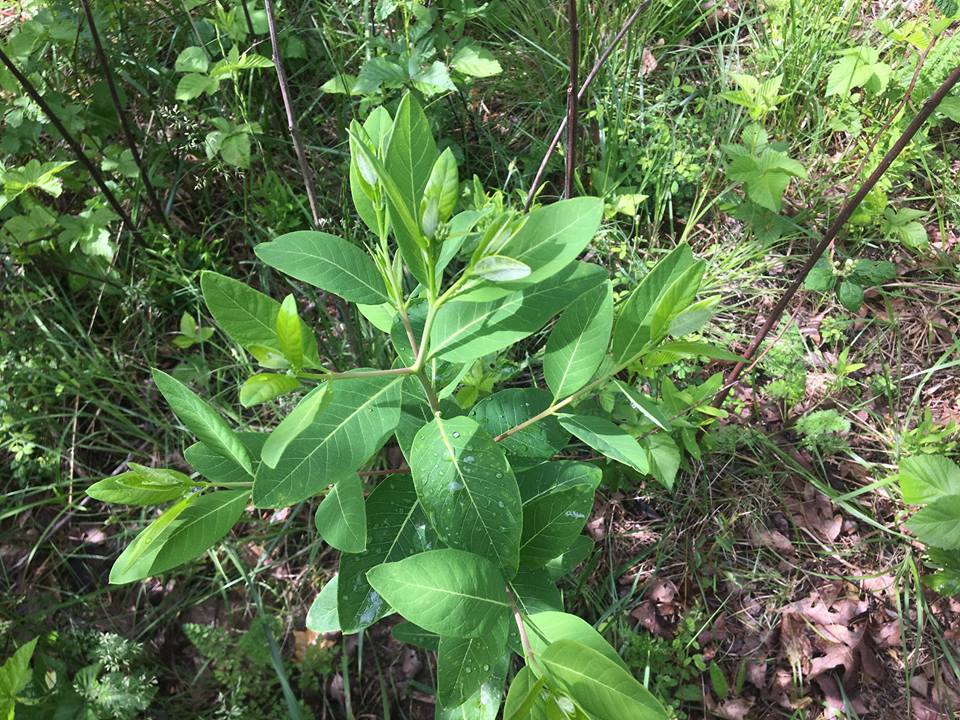
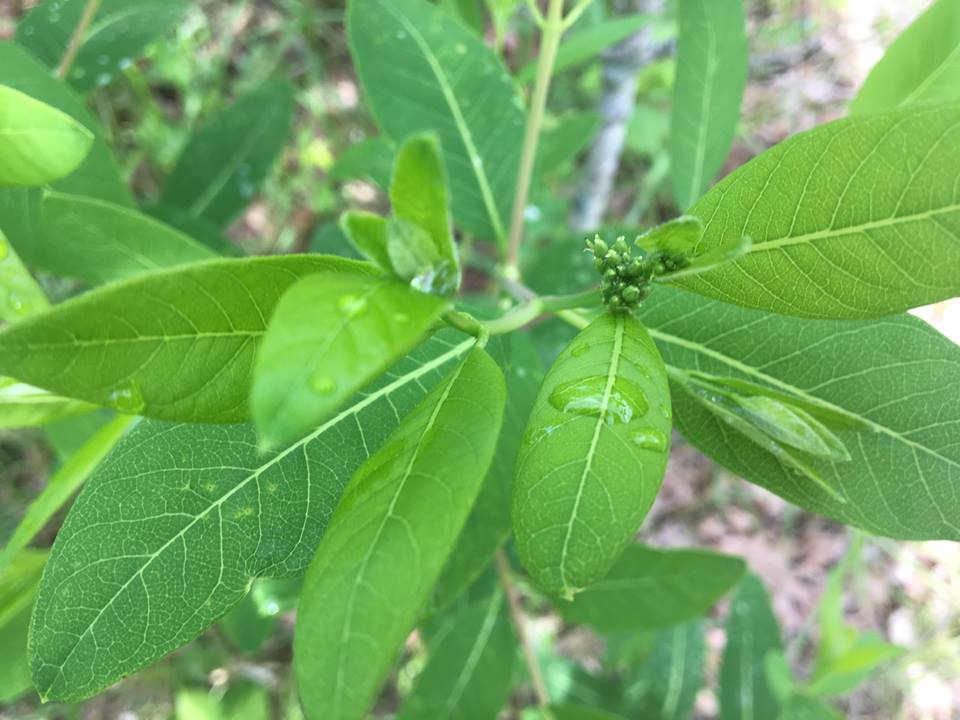
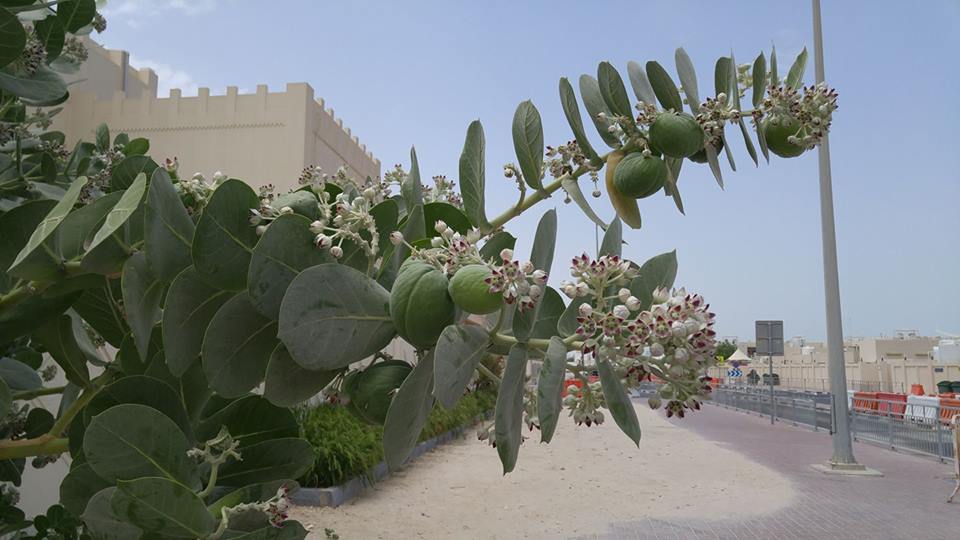
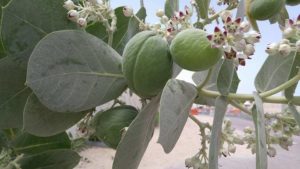

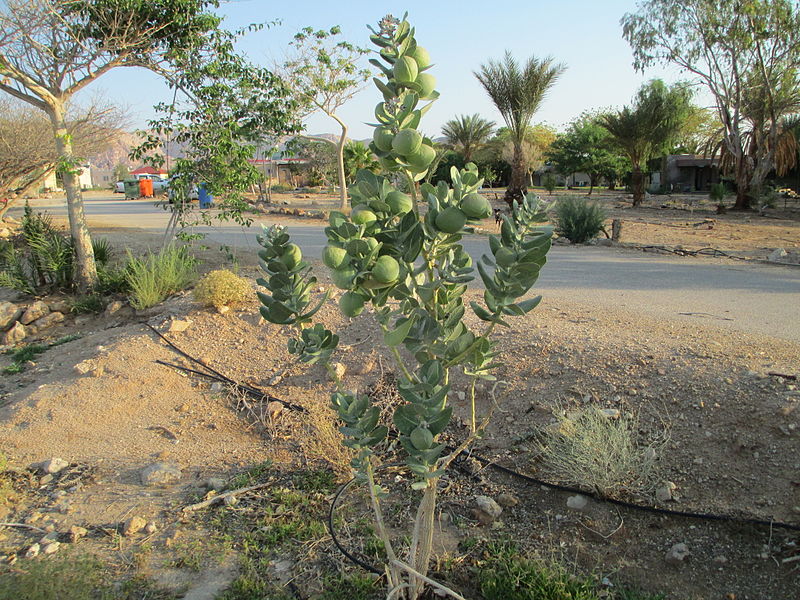
Aya, I enjoyed this post! Yes, “why not both”! It’s so fascinating that it is just a different strain. Yes, there are many kinds of milkweed – just like there are many ‘kinds’ of humans.
I have always thought we were interconnected. One huge, live, writhing energy source surrounding our earthly plains.
Very interesting pictures of the milkweed. Enjoyed the references to “Missouri Aya” and “Israel Aya”.
Thanks, Kathy. I never really became acquainted so intimately with milkweed till I came to Missouri. You helped me identify one of my first milkweed plants , I think. But it’s amazing how many different kinds there are, even in places such as Israel, where I must have seen them in passing without knowing what they were. It’s not that the plant likes it hot, as Dave McClure first suggested. Probably on finding itself in a hot, arid place, it adapted.
It is interesting to learn more about the milkwood and how this plant adapts to different environments.
Hi, Julia. I do find that interesting. I also like how the plant seems to be classified in a different way in different cultures. Here in Missouri, nobody thinks of milkweed as a tree, even though it is rather tall for just a flowering plant that springs up anew from seeds every year. But we don’t even think of it as a bush. In Israel, we get photos posted on the Wikipedia of the Sodom Apple Tree. And if you look at the stem, it really does look quite woody. Besides which, who ever heard of an apple growing on anything but a tree?
Pingback: Review of Monarchs and Milkweed by Anurag Agrawal | PubWages